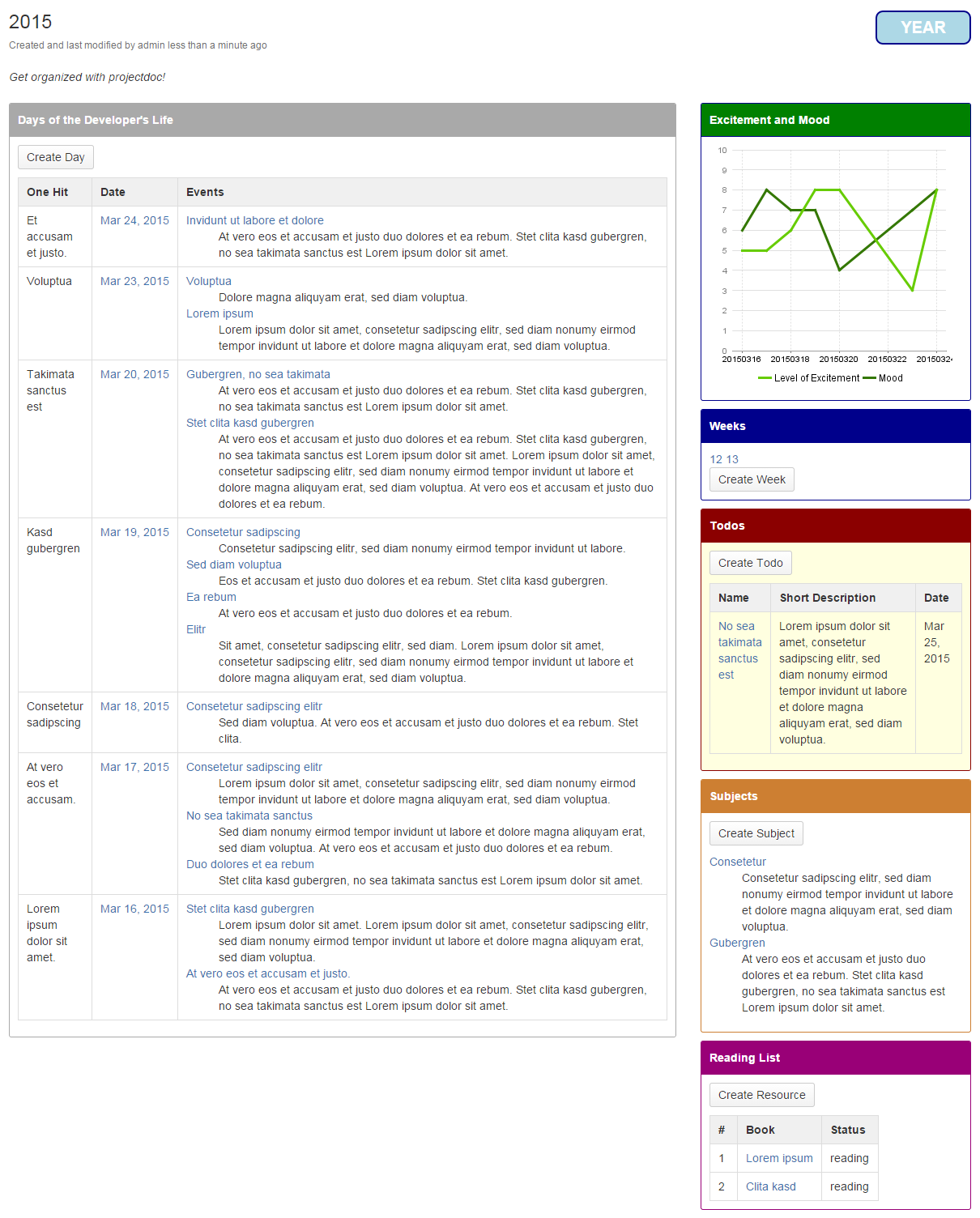- Created by Robert Reiner, last modified by Anton Kronseder on 16. Nov 2018
In order to take personal notes on one's own work and to reflect upon what has to be done or has been done, keep a journal. The information in the journal should be shareable at least with all team members.
- Domain
- Type
- Principles
There is information that may be relevant in the future. Team members or teams need some location where information can be dropped in an unstructured manner and referred to it later.
A personal journal or diary supports personal learning. Not every piece that is relevant for a team member may be relevant for the team or a stakeholder. Nonetheless the team member may want to add a record for an information or insight that she may pursue later.
The benefit of such a record is that it is searchable. It may also be organized by categorization. Especially Subjects are a handy tool to keep track on observation on a given topic. On the subject homepage the events will be automatically tracked.
Structure
A journal organized events of interest on a timeline. The keeper of the journal may recall important information easier since it may be accessed in multiple ways. One is via the timeline, the others are Provide multiple Views defined by the keeper.
This approach supports "Document First" in an unagitated manner - so it can be applied where it is relevant and introduces no maintenance costs once the information is regarded as not worthy enough to invest in it.
Advantages
Authors may think through more thoroughly a piece of work before it is conducted. They may collect information on a given topic in a highly unstructured manner. Later - once all relevant information on the topic is collected - the author may decide whether the investment to preserve the information in a more elaborate state is justifying the investment.
Authors of a journal may reflect on work that has been done as part of their personal review. It may also serve as a notebook to prepare team retrospectives.
Disadvantages
Keeping a journal takes time, making the information quickly findable needs some practice. If there are multiple entries with very similar information having these pages organized by time may actually finding relevant information much harder. To address this, information should not be duplicated and an entry that carries forward a task started in the past may simply refer to the original event (or delegate to it) and collect the additional information in one location.
A journal may bury information that is relevant for the whole team and should therefore be located in the team space and maintained by the team. To address this problem a journal keeper should communicate each piece of information to the team. The team may then decide collaboratively which information should be preserved in which form in which location.
This practice may collide with the Know your Mission practice: Charters have similar information, which is - in contrast to journals - dedicated to be read by all stakeholders (not only the author or the team). So to collect information in the journal and on the charter document must be avoided. To address this problem it is recommended that the event document references the charter document.
Variants
There are two variants to collect information in a defined, yet unstructured way.
Team Journals
Teams may keep a journal to log information that is relevant for the whole team.
The projectdoc Toolbox provides the Iteration doctype to track this information.
Project Journals
For larger projects there may be information that is relevant for the whole project, not only for teams. In order to not have the burden of keeping these pieces of information up-to-date, they may be logged into a project journal.
The drawback with this approach is when new team members have to wade through the journal, not knowing if the information in a particular event is still relevant today. Therefore there is still the need for introduction material that is kept up-to-date.
Related Practices
The following practices are related to this practice.
- Categorize
- Organize content by keywords.
- Frequency of Change
- Consider content by the frequency of change. Group content in information sets that change in the same frequency. The most important category for changes is the record, which implies no change.
- Know your Mission
- Use charters to define the purpose and benefit of each document. State the expectation of the stakeholders involved.
Resources
For more information regarding this practice please refer to:
- Journals
- You want to track your findings? Either with your team or individual? The projectdoc Toolbox supports teams to create project or team journals and individual team members to keep a professional diary.
- projectdoc Developer Diaries
- Provides doctypes to organize the developer's work by the employment of a diary. Take you personal planning and professional records to the next level!
- Doctypes for Agile Planning
- Provides doctypes to collborate with your team. Run iterations and record discoveries that may be of interest at the end of the iteration or for even later reference. Quick notes are more easily added as records to the team's space than to the official documentation tree. Defer the talk to the documentation architect to the end of the iteration (if the discovery is still of interest).
- Subject
- Subject documents allow to set document instance of different doctypes in a common context.
- Iteration
- Document an Iteration that may be linked from JIRA. Allows the team to set the goal and add notes relevant to a particular iteration.





